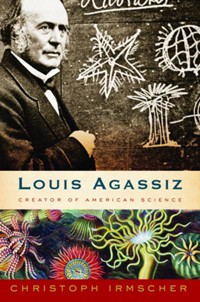Advertisement
Grab your lab coat. Let's get started
Welcome!
Welcome!
Create an account below to get 6 C&EN articles per month, receive newsletters and more - all free.
It seems this is your first time logging in online. Please enter the following information to continue.
As an ACS member you automatically get access to this site. All we need is few more details to create your reading experience.
Not you? Sign in with a different account.
Not you? Sign in with a different account.
ERROR 1
ERROR 1
ERROR 2
ERROR 2
ERROR 2
ERROR 2
ERROR 2
Password and Confirm password must match.
If you have an ACS member number, please enter it here so we can link this account to your membership. (optional)
ERROR 2
ACS values your privacy. By submitting your information, you are gaining access to C&EN and subscribing to our weekly newsletter. We use the information you provide to make your reading experience better, and we will never sell your data to third party members.
Policy
A Hero Preserved In Brandy
by Carmen Drahl
November 3, 2008
| A version of this story appeared in
Volume 86, Issue 44

An important lesson in tissue conservation chemistry emerged from the death of Vice Admiral Horatio Nelson, one of Britain's most revered military heroes. Nelson was fatally shot at sea on Oct. 21, 1805, while leading the Royal Navy to a decisive triumph in the Battle of Trafalgar during the Napoleonic Wars. Suspecting that a state funeral would be in order for the adored commander, William Beatty, the surgeon aboard Nelson's vessel, the H.M.S. Victory, opted to preserve Nelson's remains for the trip back to England instead of conducting the customary burial at sea. Beatty later published the book "The Death of Lord Nelson," an account of the event that explained his procedure and his observations in detail.
By the early 1800s, preservation in liquor was a well-recognized practice, so Beatty decided to place Nelson's remains in a large cask filled with brandy. The cask was lashed to the deck and placed under guard. Throughout the voyage to England, Beatty refreshed the brandy because the corpse absorbed a significant quantity of fluid. He sometimes used defined ratios of brandy and "spirit of wine," a distilled ethanol, which he obtained at port in Gibraltar.
Once back home, the British press roundly criticized Beatty for failing to preserve Nelson in rum, which at the time was believed to be superior to brandy as a preservative, says John E. Simmons, an independent museum consultant. "The reason everyone thought rum was a better preservative was because it was commonly used, but rum was commonly used because it was cheap," Simmons explains.
Beatty defended his actions in "The Death of Lord Nelson" and laid out the chemical principle underpinning good preservation—ethanol concentration. He wrote: "There are several kinds of spirit much better for [preservation] than rum; and as their appropriateness in this respect arises from their degree of strength, on which alone their antiseptic quality depends, brandy is superior. Spirit of wine, however, is certainly by far the best, when it can be procured."
When Beatty examined the preserved body weeks after Nelson's death, he found that "it exhibited a state of perfect preservation, without being in the smallest degree offensive." Beatty's careful attention to chemical detail was vindicated when the Victory's officers and other public figures saw Nelson's body for the first time. Beatty wrote, "All the Officers of the ship ... witnessed its undecayed state after a lapse of two months since death, which excited the surprise of all who beheld it." Nelson was given a state funeral and was entombed in St. Paul's Cathedral, in London.





Join the conversation
Contact the reporter
Submit a Letter to the Editor for publication
Engage with us on Twitter